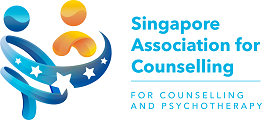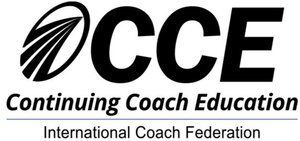ADHD & Motherhood: Navigating Challenges, Rebuilding Confidence, and Thriving as an ADHD Woman

ADHD isn’t just something that hyperactive little boys have, and it certainly doesn’t disappear when you grow up. For many women, ADHD remains undiagnosed for decades, leading to overwhelm, self-doubt, and frustration. When motherhood enters the mix, these feelings become even more intense—bringing a daily battle with organization, emotional regulation, and the never-ending mental load.
If you’re an adult woman with ADHD and also a mum, you are not alone. I see you, and I understand the challenges firsthand. Diagnosed at 35, I know what it’s like to spend years feeling like I struggled to do the most simple of things that other mums breezed through—only to later realize that ADHD had been running the show all along. But once you understand your ADHD, you can work with it—instead of it ruling you.
I’ve made it my mission to help women reclaim control over their lives. Through my Balance Quest ADHD Screening & Symptom Management Programme, I guide women just like you in overcoming obstacles and finding strategies that actually work.
The Hidden Struggles of Late Diagnosis
ADHD in women is often misunderstood or dismissed. Many of us grow up being told we’re just "scatterbrained," "too sensitive," or "lazy"—when in reality, we’ve been living with a neurodevelopmental condition that impacts focus, emotional regulation, and executive function.
It’s no surprise that many women don’t get diagnosed until their 30s, 40s, or even later. We spend years masking our struggles, trying to keep up, and wondering why everything feels so much harder than it seems for everyone else.
Common Signs of ADHD in Women:
• Constantly feeling overwhelmed by daily responsibilities
• Difficulty keeping up with schedules, appointments, or deadlines
• Struggling with emotional regulation—frequent frustration, anxiety, or low self-esteem
• Forgetting things (even important ones) or losing track of time
• Being disorganized, despite trying countless planners and systems
• Feeling like you’re "always behind" or "never doing enough"
Does this sound familiar? You are not broken. Your brain just works differently—and that’s okay.
The Invisible Struggles of Motherhood with ADHD
If managing ADHD is already overwhelming, motherhood can make this 10X more challenging. The constant demands, unpredictable routines, and 24-7 caring for children can leave ADHD mums exhausted, overstimulated, and feeling like they’re a failure.
Here’s how ADHD can impact motherhood:
1. Debilitating Overwhelm
Juggling school schedules, meal planning, and managing the household, the never-ending to-do list can feel absolutely impossible to keep up with. ADHD mums often struggle with procrastination and forgetfulness, making keeping on top of things so much harder.
2. Mum Guilt and Staying Calm in Chaos
ADHD affects our impulse control and emotional regulation, meaning that irritability, frustration, or overstimulation can hit really hard—especially when kids demand constant attention. Most ADHD mums feel guilty for snapping at their children or struggling to be patient
3. Sticking To Daily Routines
Planning ahead, following schedules, and staying organized? Easier said than done. Many ADHD mums really struggle with executive function, making ‘simple’ daily tasks like packing lunches, remembering school events, or sticking to a structured routine feel like an uphill battle.
4. When You Doubt Yourself
Many ADHD women have spent their lives masking their symptoms, trying to "keep up" with neurotypical expectations. This can lead to crippling self-doubt and perfectionism, making us feel like we’re constantly falling short as mothers.
5. It Can Become TOO MUCH
The constant noise, touch, and chaos of parenting can be overwhelming for ADHD brains, leading to sensory overload, stress, and emotional exhaustion. This can make it difficult to be present, patient, and engaged.
Struggling doesn’t mean failing. ADHD mums are some of the most creative, compassionate, and resilient women I know. With the right support and strategies, you can turn ADHD challenges into strengths.
How Therapy & The Balance Quest Programme Can Help:
I created Balance Quest ADHD Screening & Symptom Management Programme because I know how life-changing it is to finally understand your ADHD and develop strategies that actually work. It’s not about fixing yourself—it’s about working with your brain, not against it.
Here’s how we can help:
🔹 Understanding ADHD in Women
Every woman’s ADHD experience is completely unique. In personalized sessions, we explore how ADHD affects your daily life and develop strategies tailored to your specific challenges.
🔹 Time Management & Organization
We’ll work together to create realistic, ADHD-friendly routines and strategies that help you prioritize, structure, and actually follow through on tasks. No more trying to fit into neurotypical systems that don’t work for you!
🔹 Emotional Regulation & Stress Management
Learning to manage frustration, anxiety, and mom guilt is key. We’ll use practical techniques from Cognitive Behavioral Therapy (CBT), mindfulness, and breathwork to help you navigate emotions with more ease.
🔹 Self-Esteem & Confidence Building
Years of undiagnosed ADHD can leave women with a damaged sense of self-worth. Therapy can help you reframe negative self-talk, recognize your strengths, and develop self-compassion.
🔹 Career & Work-Life Balance
ADHD can make workplace challenges feel overwhelming. We help women advocate for accommodations, improve focus, and develop productivity strategies that actually workwith an ADHD brain.
🔹 Relationships & Communication
ADHD can impact personal and professional relationships. Therapy provides tools for setting boundaries, improving communication, and deepening connections with partners, family, and friends.
🔹 Self-Care & Burnout Prevention
Many ADHD women struggle with all-or-nothing thinking around self-care. We focus on realistic, sustainable self-care strategies that fit into your life without feeling like another overwhelming to-do.
Through one-on-one therapy, ADHD coaching, and structured support programs, we provide the tools you need to take control of your ADHD and build a life that actually worksfor you.
You Are Not Failing
If you’ve spent years struggling, questioning yourself, or feeling like you’re constantly falling short—please know this: You are not failing. You are not broken. You are simply a woman with ADHD who deserves support and strategies that work for YOU.
Being a mum with ADHD is challenging, but you’re also a mum with tons of creativity, love, and resilience. With the right tools, you can learn to manage overwhelm and create a fulfilling life.
If you’re ready to take the next step, I’m here to help. Whether you’re newly diagnosed, suspect you have ADHD, or simply want to learn strategies to feel more in control of your life, let’s work together.
📌 Book a session with me at Counselling Perspective (in-person or online) and start your Balance Quest today.
🌟 You don’t have to figure this out alone—because ADHD women deserve support, understanding, and the chance to thrive.
For more information: [email protected]










